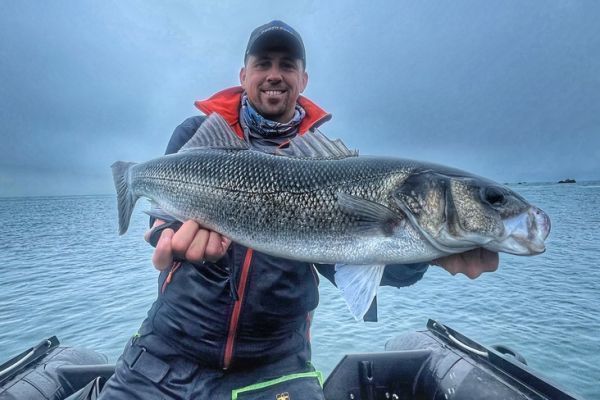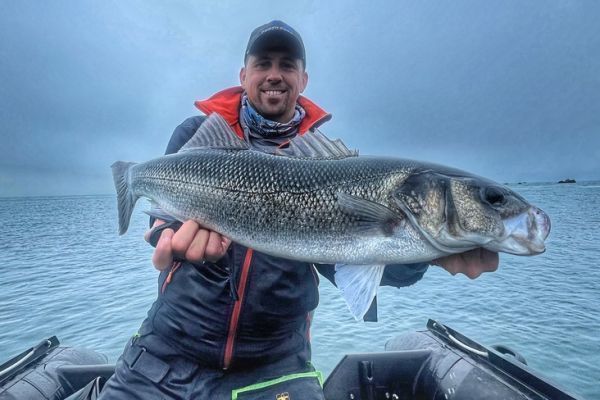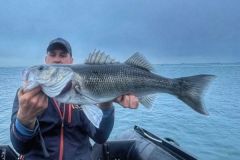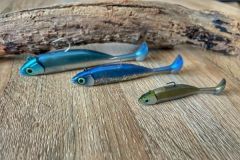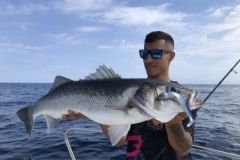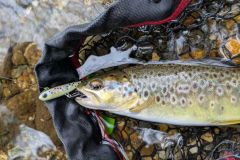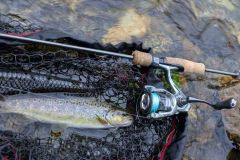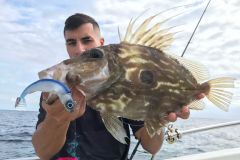Fish often isolated
As the outings progressed, I noticed that tracking large specimens differed from tracking smaller ones. You won't find them on the same spots, or at least not at the same time.
I distinguish two types of behaviour in sea bass:
Fish hunting in the water layer. These schools are made up of several hundred individuals, often of the same size.
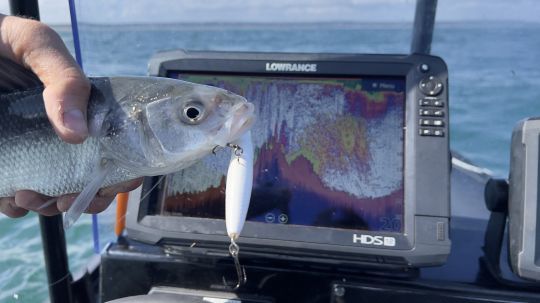
S f we can estimate an average, I'd say it's between 35 and 55 centimetres. It's hard to get a trophy fish. By trophy fish, I mean a sea bass exceeding 70 centimetres.
Posted fish are generally larger in size. The big fish are often isolated, far from the euphoria of hunting small ones. These are the ones I look for at the end of the season to try and catch one of these trophy fish.
Look for areas where fish are posted
With this in mind, I'm looking for areas where fish will be posted.
I look for areas with a steady current, loaded with food where big fish can hide. A drop-off of just a few metres is the perfect spot!
Unlike pollock fishing, where I look for large drop-offs, here a 3 to 5-metre drop-off is more than enough to shelter these big fish.
Here, they'll be sheltered from the current, but on the lookout for prey carried by it. All they have to do is emerge from their hiding place to seize it.

Don't look for deep water at the end of the season
At the end of the season, life is often found close to shore. The water temperature is higher than offshore. Forage fish are abundant. The big sea bass will be in these same areas.
On my map, I look for interesting spots at depths of 10 to 15 metres.
What about equipment for big bars?
As you can see, I mainly go for big bass in areas with strong currents and depths of no more than 15-20m.
In these conditions, my favourite technique is shad fishing.
My personal choice of equipment is a Rodhouse rod, in this case the NFC MB 739 IM, with 15/60 power, to which I've added a size 4000 reel fitted with PE 1.2 braid.
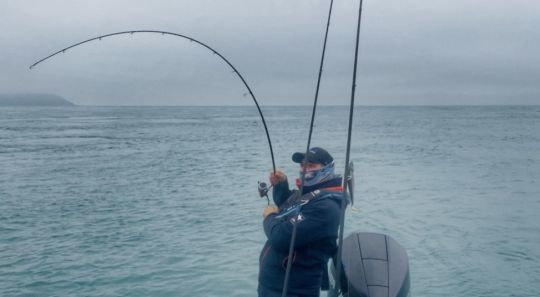
This set allows me to easily control big fish, but also to use fairly heavy lures.
Speaking of lures, I'm particularly fond of the 15 cm models. Indeed, at the end of the season, forage fish have grown up a lot. So I'm abandoning the smaller models for the bigger ones.
A Black Minnow 160 mounted on a 60-gram head is my top pick for targeting big bass.
Let's talk fishing techniques
Targeted fish are sheltered from the current, behind drop-offs. This means fishing close to the bottom. Technically, this is not easy. If you fish too far from the bottom, the fish won't come out of hiding to grab your lure. On the other hand, if you fish too close to the bottom, you're bound to hook them.
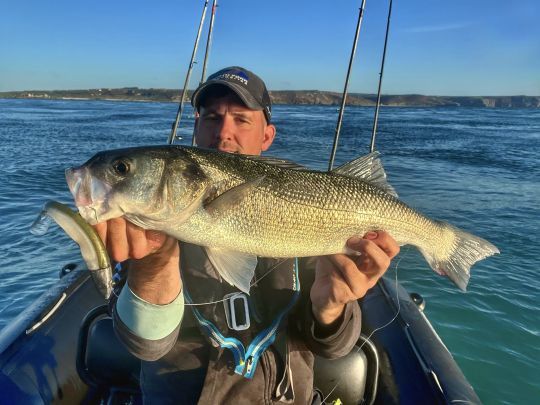
I try to make contact with the bottom once and then let the lure hover as close to it as possible.
The depth sounder plays an important role, as it's on this that I'll see the drop-off appear, at which point I'll leave a few meters to let my lure evolve as close as possible to the bottom.
Because of the strong current, usually close to 5 knots, my animations are very minimal. I just lift the lure off the bottom and accompany it on its descent. The current does what's necessary to make it swim.
The bite is often violent and the fish has to be quickly removed from the bottom to prevent it from regaining its hiding place.
